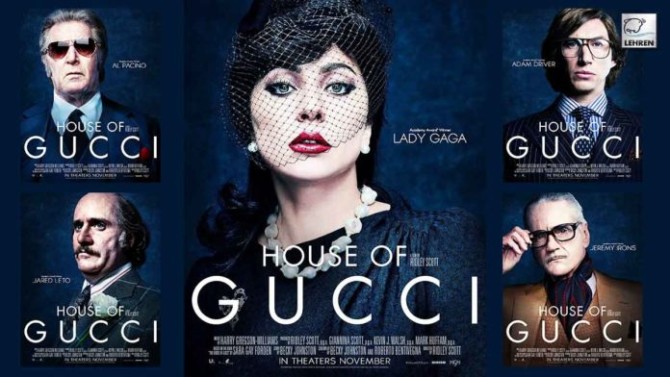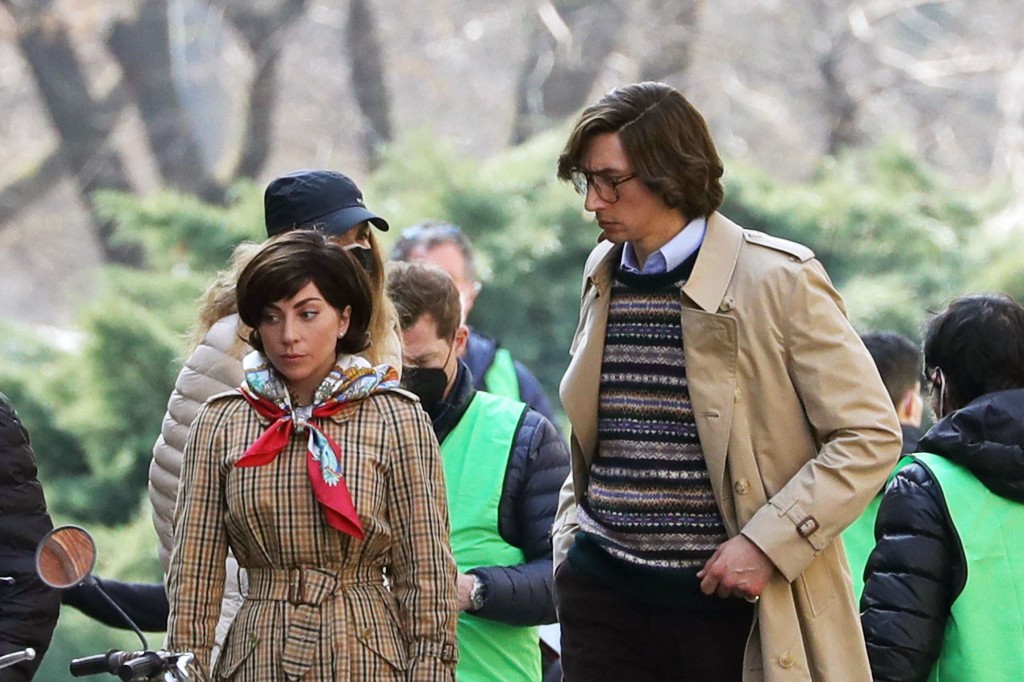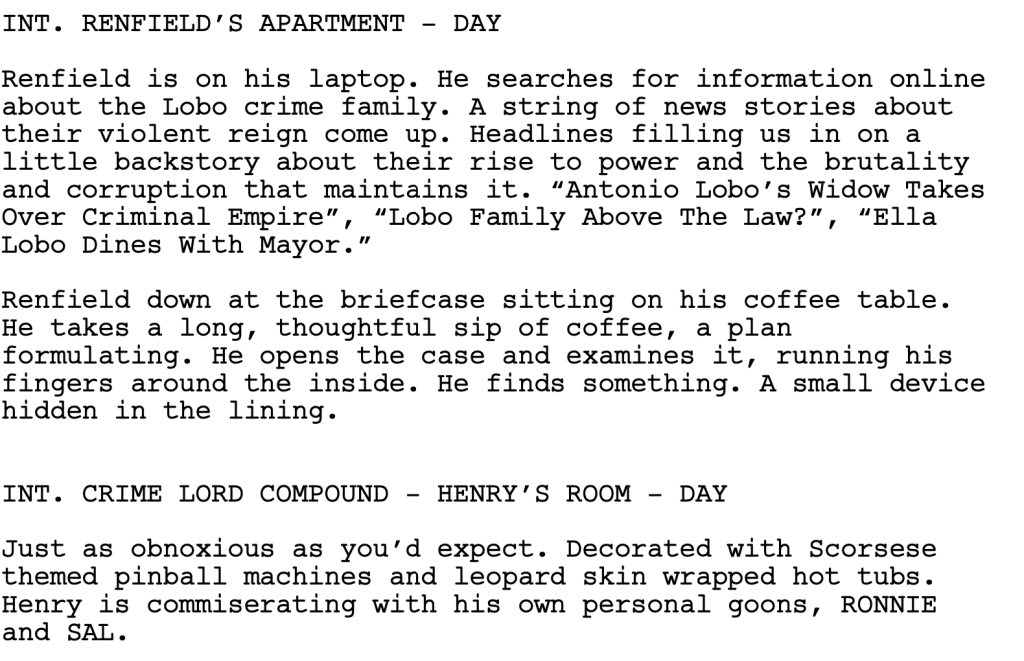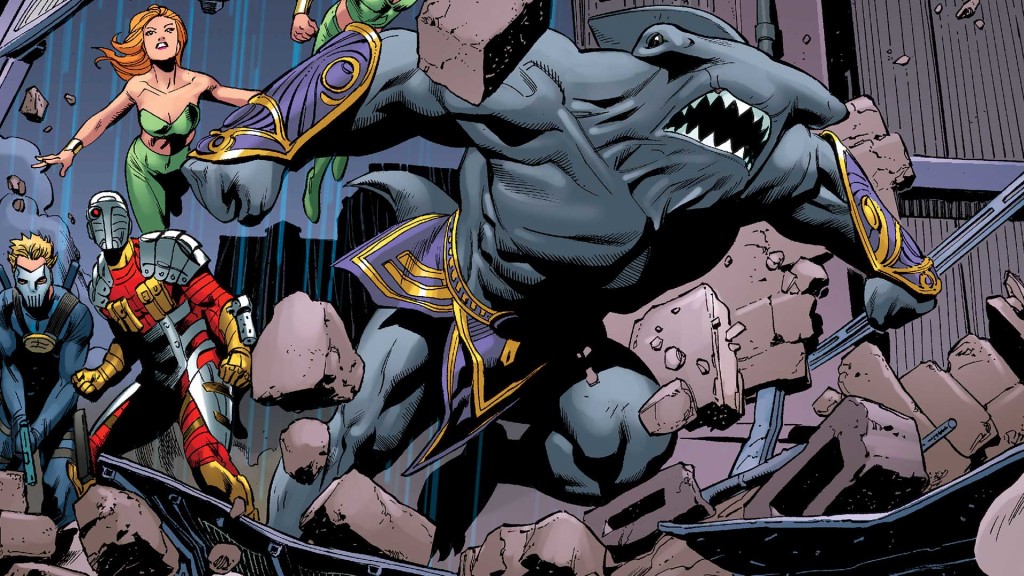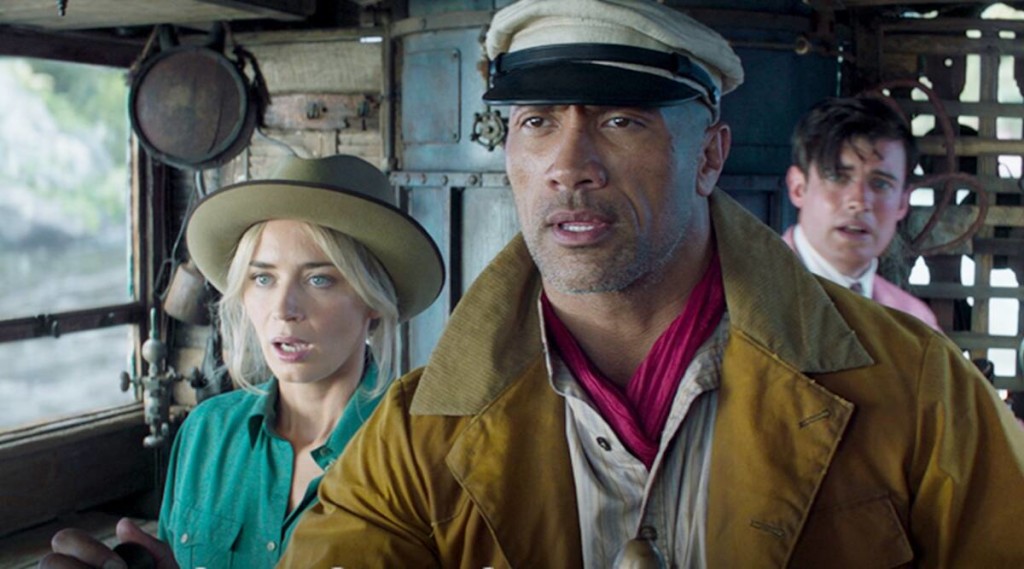Is Gucci the best ‘dysfunctional family’ script ever written?
Genre: Biopic
Premise: Follows the notorious Gucci family, specifically the relationship between Maurizio Gucci and his blue-collar wife, Patrizia.
About: For a director in his 80s, Ridley Scott sure does get around. Gucci is a huge awards contender this year. We may have finally found a non-Star Wars movie where Adam Driver doesn’t just get recognized for his amazing acting, but also makes some money! Lady Gaga also stars. The script was written by screenwriting newcomer, Roberto Bentivegna.
Writer: Roberto Bentivegna (based on the book by Sara Gay Forden)
Details: 133 pages
Readability: Medium
I was kind of interested in this one because I know ZERO about Gucci. I didn’t even know what Gucci’s first name was. I thought he was like Madonna. One name only. I figured I was going to get some early version of the Kardashians with “Gucci” – something vapid and empty. But it turns out the Gucci story is a lot more interesting than you might have thought.
It’s 1975 in Milan, Italy. 25 year old Patrizia Reggiani (who will be narrating our story) is trying to get a man. Or, I should say, her mother is trying to get her a man. And since they’re poor, her mother’s got her sights set on the richest people in Italy. She spends all day looking up parties and calling up rich families to try and get her daughter near super rich men.
They finally strike gold when Patrizia charms a young Maurizio Gucci at a party. Patrizia is relentless in her courting of Maurizio and, soon, they’re married. But nobody on the Gucci side of the family shows up to the wedding because they believe all Patrizia is interested in is the money. Which we’re meant to believe she’s not (more on that later).
We then meet the Gucci family. And boy are they unique. Gucci, if you don’t know, is an upscale clothing brand. You have Aldo, 70, who’s the skirt-chasing current CEO of the company. You have his son, Paolo, who thinks he’s a designer but is the least-talented designer in all of history. You have Rodolfo, who’s Aldo’s brother and Maurizio’s dad. He just loves the lavish lifestyle Gucci has allowed him to live. And then you have Maurizio, who doesn’t really want anything to do with Gucci.
But that’s about to change. Patrizia realizes Gucci could be so much more than it is. So she starts putting a plan together to give her and Maurizio total control of the company. First, she gets Aldo put in American prison for tax evasion. She then gives Paolo enough money to start his clothing line, which, of course, fails, and when he’s left with nothing, she forces him to sell his quarter of the company to them. This leaves Rodolfo, who conveniently dies. Which means Maurizio and Patrizia now own the company.
But just when it looks like all of her dreams have come true, an old female friend comes back into Maurizio’s life, wins him over, leading to Maurizio and Patrizia’s separation. Patrizia is so devastated that she tries everything in her power to get him back. But he tells her that she destroyed his family and doesn’t want her in his life anymore.
I’m going to get into major SPOILER territory for the rest of the review but you probably already know this. Patrizia hires a couple of hitmen to kill her husband. Which they do. And she actually thinks she’s going to get away with it and obtain the entire Gucci fortune. Unfortunately, it doesn’t take the cops long to connect the dots and send her to prison for 30 years. Which means she should be getting out soon! All you elderly rich bachelors, be on the lookout!
Man, what a script!
I always forget how powerful tragedy narratives can be when the characters are actually interesting. Last week we had Plush. And that guy was *kind of* interesting. But this family is the craziest weirdest family ever. None of the Guccis knew what they were doing and they were running one of the most famous fashion brands in the world.
To remind screenwriters everywhere, when you don’t have a goal-driven screenplay like, say, the recent “Love and Monsters” (travel across the forest to find a girl), you can use this formula whereby the main character is trying to BUILD SOMETHING. In this case, Patrizia is trying to build an empire. She’s trying to consolidate Gucci so that her and her husband can run it. That’s why we keep turning the pages. We want to see if she succeeds.
Speaking of Patrizia, I do not envy the challenge Bentivegna had with her.
He’s working with an extremely unlikable person in Patrizia. I mean, anyone who kills their husband is obviously not the best. But he can’t show that or else we’re not going to root for her. So the script engages in this endless dance of figuring out clever ways to make Patrizia not look as bad as she is and still have her do bad things.
For example, Bentivegna knew that if he had Patrizia hunting around Italy for rich men only, we’d hate her. So he shifts that responsibility over to the mom. It’s the mom who’s dead set on Patrizia finding a rich husband. Patrizia is innocent in all of this – wink wink.
Likewise, whenever she talks to Maurizio (or anyone else for that matter), she’s perfectly nice to them. And not in a conniving way. She’s genuinely nice. But then, out of nowhere, she’ll savagely manipulate Paolo to take his quarter of the company. For a while, I kept wondering why someone so nice was doing these things. And then I realized, oh, she was a terrible person in real life but they know if they show that, we’ll hate her and tune out.
Despite cheating on that front, the script still works. I think it’s because there’s so much conflict baked into this family. Nobody likes each other. They’ve all got different ideas on how to run the company. They’re all protecting their percentage of the fortune. And then you have this wildcard in Patrizia who’s trying to shuffle the deck and when you mix all that conflict together, it’s only natural that it will be entertaining.
I don’t think there’s a bad scene in the entire script.
I also give credit to Bentivegna for not making a common mistake made in these screenplays – which is that when writers take on a real-life murder story, they don’t actually write a story. They write the ending, where the person is murdered. Then they go back and write 100 pages of filler to get us there.
With Gucci, I wouldn’t have even cared if there wasn’t a murder. That’s how good the story was. I loved watching the dimwitted Paolo try to launch his own clothing line and come up with the most disastrous fashion show in history. I liked that the two brothers didn’t see eye-to-eye on business whatsoever so they just ran their halves separately. I loved the infighting as well as the fighting with the other major Italian fashion brands.
And I just loved learning little details about the company. That one of the reasons their products are so amazing is because they raise the Rolls Royces of cows. Or that they – as in Gucci – deliberately sold knock-off versions of Gucci on the street just to make a little more money.
Like I said at the top of this review, this is probably the best dysfunctional family script I’ve ever read. Every single character is memorable. That alone should inspire you to read it. Because, remember – the hardest thing to do in screenwriting is write memorable characters. And this script excels at that. So check it out. It’s well worth your time!
[ ] What the hell did I just read?
[ ] wasn’t for me
[ ] worth the read
[x] impressive
[ ] genius
What I learned: Offload some of your “unlikable” protagonist’s dirty work to a secondary character. This will make them less unlikable. That’s what Bentivegna does here. He takes Patrizia’s worst traits, such as being a gold digger, and moves that motivation over to her mother. It’s a small detail but it has major ramifications in how we view the hero.
Genre: Horror/Comedy/Action
Premise: In modern day Detroit, Dracula’s eponymous servant, Renfield, is fed up with his abusive boss. So he puts in motion an exit strategy.
About: This is a project that came together two years ago with horror superstar Robert Kirkman (The Walking Dead) coming up with the idea. It’s part of the new Universal mandate to explore their ‘monster’ IP as a set of unique films as opposed to an interconnected universe (a la Avengers). The project is written by Ryan Ridley (Rick & Morty), will be helmed by Chris McKay (Tomorrow War), and will star Nicholas Hoult. It’s important to note that this is the 2019 draft so the script has likely evolved since then.
Writer: Ryan Ridley
Details: 98 pages
Readability: Very Slow
This is a pretty neat idea.
Take one of the most famous characters of all time – Dracula – and introduce a part of him that most people don’t know about – his servant, Renfield. Because the nature of servitude is humorous in a modern context, you make it a comedy.
For those of you trying to come up with a concept that lands with people, it’s always good to use characters who are known to audiences. I don’t see “Renfield” being nearly as compelling if Renfield is serving some vampire named Jake. The fact that we’ve got THE BIGGEST MOST RECOGNIZABLE vampire of all time is what gives the concept pop.
Now let’s see if the script is any good.
We’re in Detroit, Michigan, one of the worst cities in the United States. It’s here where we meet Renfield, a 40-something aging-hipster type, in his weekly support group for co-dependents – people who are stuck in abusive relationships that they don’t have enough self-esteem to leave.
After listening to one of the women in the group talk about how her partner sucks, we follow Renfield to an apartment, see him eat a cockroach, gain superhuman powers, then kill the man who we realize is the significant other of the girl in the group. While this is happening, ANOTHER person comes into the apartment – a hitman who also wanted to kill the significant other, and Renfield kills him too.
Renfield then takes the significant other’s suitcase, which it turns out is filled with drugs, as well as the significant other’s body, and brings it back to the sewers, where his master, Dracula, sucks him dry. Renfield then goes home to his apartment. What he doesn’t know is that because of that suitcase, the city’s biggest drug lord, Ella Lobo, is now after him.
Cut to a cop with a serious anger problem named Rebecca. Rebecca is tasked with figuring out what happened in this apartment. She eventually realizes that this Renfield guy is involved. Which means the cops are after Renfield too. When she catches up to Renfield, he falls in love with her, but she hates him because she thinks he’s a serial killer. Their relationship gets even more complicated when he informs her that he’s been Dracula’s servant for the past 100 years and he gains superpowers when he eats bugs.
After the cops catch and throw Renfield in jail, Rebecca really wants to take down the Lobo family and, therefore, breaks Renfield back out of jail and teams up with him. But, wouldn’t you know it, as this is happening, Ella Lobo makes a deal with Dracula, which means that Renfield and Rebecca aren’t just going to have to take down the Lobos. They’re going to have to take down the master himself!
I’ve only seen a few episodes of Rick and Morty but the fact that this is what today’s screenwriter is known for is telling. From the couple of times I’ve watched the show, I’ve found the jokes to be fast and furious and come from everywhere. That crazy disjointed nature is part of why so many people love the show.
But while that may work in half-hour animation, it does not work in a 100 minute feature. As you’ve heard a million times on this site, features need focus (FNF) and “Renfield” doesn’t have any. It doesn’t seem to know what it wants to be. The engine driving the story changes every ten pages.
You can chalk some of that up to an early draft. But I’ve read a lot of first drafts that eventually became movies and what I’ve learned is that if the foundation isn’t solid in that first draft, the story never gets good no matter how many drafts you do.
I mean we start off with Renfield killing people for his master. So far, so good. Then we learn Renfield eats bugs to generate superpowers. That is not a very good idea. Then we have a bag of drugs dictating the plot. Okay, so we’ve just gone from an original concept to a generic one. Then we switch main characters for a while and Rebecca becomes our lead. At this point, the script is off the rails. Now Renfield is considered a serial killer by the FBI so everybody tries to capture him. I’m happy that the writer really liked Silence of the Lambs but that is the wrong plot development for this script. Oh wait, now it’s a team-up movie! Renfield and Rebecca become a buddy-cop team to take down the bad guys.
Again, you can get away with this type of concept-jumping in half-hour animation because the time is short and the level of emotional investment is low. But with a 100-minute movie, you have to build up investment in the characters, as well as the plot, and that requires patience and focus. If you start jumping around to any plot point that you fancy in that moment, the audience will tune you out. Which is what happens here.
Another person who read the script told me they couldn’t even get out of the first act due to how scattered the plot was.
At least one part of the script works: Renfield’s co-dependency support group. If you remember, I told you the other week that you want to be doing MORE THAN ONE THING in your scenes. That’s what the co-dependency group does. First, it cleverly establishes that Renfield is in a bad relationship (with Dracula) that he is trying to get out of. Second, this is also where he finds his victims for Dracula. He gets the names of these support group members’ evil significant others, seeks them out, and takes them to his master.
When I read that, I said, “Okay, this could be good.”
But literally everything that follows doesn’t work.
Just this idea that he eats a cockroach or a centipede and, all of a sudden, becomes a superhero… I’m sorry but that’s not a good idea. How do you even rationalize that connection? That bugs can provide powers? At least with Ratcatcher 2 (from The Suicide Squad) she had an entire backstory about how she learned to control rats. It was baked into her character. This just felt like one of those exhausted 3am throwaway ides – “What if he like…. GAAINED SUPERPOWERS WHEN HE ATE BUGS???”
Another problem with the script is one I hadn’t considered, which is that you have this looming shadow over the whole story that is Dracula. He is the reason we’re here. As I stated earlier, the movie doesn’t work if Renfield is a servant to Random Vampire Jeff. It works because he’s a servant to the biggest vampire of all time.
And therein lies the problem. We want Dracula. But the more Dracula you show, the more you overshadow Renfield. So what do you do? Neither Kirkman nor Ridley seems to have the answer. Oddly, Renfield doesn’t even live with Dracula. Dracula lives in the sewer system while Renfield lives off in some apartment somewhere. So they’re not even around each other for 90% of the screenplay. That seems like a miscalculation in a movie about a master and servant.
I’m not the comedy expert but I’m thinking your comedy is going to come from your actual concept – which is that Renfield is the servant to Dracula. The comedy isn’t going to come from some 30 year old drugs-in-a-suitcase plotline.
Some of the choices here are kind of baffling to be honest.
You may have noticed that I’ve added a new category to my reviews – READABILITY. Why did I do this? I realized that one of the most important qualities for a script is HOW EASY IT READS. I’ve read 150 page scripts that were breezy reads and 90 page scripts that felt like my eyes were sinking in quicksand. As spec screenwriters, your script’s ‘readability’ should be a top priority.
Readability refers to having a clear and concise writing style. For example, some writers love to be clever. But cleverness only complicates the read, especially if you’re not very good at it. So be clear and concise. You also want to say as much as possible in as few word as possible. Most of the things you say in six lines you can say in three. And finally, some writers have a natural ability to blend words together in a way that’s pleasing to read. All those things make for an easier reading experience.
“Renfield” was clunky. It was unclear. There were giant paragraphs for days. And this is a comedy script. Comedy is the one genre where the readability has to be light-speed. If it’s even medium, its’ not going to work. So “Renfield” was really disappointing on that end.
I wish I had more good things to say about Renfield but unless they’ve come up with a completely different take on the subject matter since this draft, I’m going to say that this project has an uphill battle. The one argument you can make is that it’s comedy and, as we all know, comedy is subjective. I know tons of people who LOVE Rick and Morty so it may be that I just don’t get the comedy here. Which wouldn’t be the first time (I had a lot of these same criticisms for the “Ted” script, for example, and that movie went on to be a mega-hit). So we’ll see. I just wish there was a clearer vision on the page.
[ ] What the hell did I just read?
[x] wasn’t for me
[ ] worth the read
[ ] impressive
[ ] genius
What I learned: “MARK, 50s, a gentle giant a la John Carrol Lynch, the leader of this support group.” Don’t use obscure real person references in your screenplays. Nobody knows bit actors’ names. Even if they did, when you make references like this, it looks amateur. This is a Screenwriting 101 mistake.
Genre: Superhero
Premise: The infamous Suicide Squad are dropped off on a Cuba-like island where they’ve been tasked to overthrow the authoritarian government.
About: 2016’s Suicide Squad was supposed to be DC’s secret weapon and depending on what metric you used, it either succeeded (it made 750 million at the global box office) or failed (nobody liked it). The fan reaction was so steeped in apathy, in fact, that a second movie was up in the air. Then, as if by some miracle, the sequel got someone, in James Gunn, who would normally never stoop to making a Suicide Squad film. And, all of a sudden, they had a hot juicy project on their hands. During the last year, The Suicide Squad was the most buzzed about upcoming superhero movie of them all. Well, it finally came out this weekend and, unfortunately, it looks like the pandemic once again reared its ugly head, eating into the film’s box office, as it only took in 27 million. For reference, Black Widow, released a month ago, made 80 million. There is a caveat to this. The Suicide Squad could be seen for free on HBO Max at home. I’m sure that ate into the numbers a bit because if you look at the reviews, both critically and fanwise (92% and 85% respectively), everyone seems to have liked the film. Which makes it very hard to tell where the Suicide Squad franchise goes from here.
Writer: James Gunn
Details: 132 minutes
I think everyone here knows the first question I’m going to ask.
Is Suicide Squad better than Jungle Cruise?
Such a great question. But the real question we should be asking is, is any movie better than Jungle Cruise?
Okay okay. I’ll stop the trolling.
The Suicide Squad is definitely a better movie than Jungle Cruise.
Let’s try to find a better comp, though.
Is Suicide Squad better than Army of the Dead? In both films you’ve got a team of bad people going into a dicey area where they’ve been tasked with achieving a singular goal.
I’m happy to report that The Suicide Squad is better than Army of the Dead. It’s actually not even close.
But now let’s make things interesting.
Is Suicide Squad better than Black Widow?
Now you’re moving into a dicier discussion because there were a couple of things I thought that Black Widow did better than The Suicide Squad. I thought that its depiction of a broken family hit harder emotionally than anything The Suicide Squad did. And I thought that both Black Widow’s sister and her father were funnier than any of the characters in The Suicide Squad. So I had a little more fun with the Widows than I did the Squad.
With that said, The Suicide Squad took a lot more chances than Black Widow and, as a result, was the more interesting film. I know that one thing James Gunn made a priority was that no one should be safe here. Marvel has become a joke in that respect because you know that nobody’s going to die in their movies. And, even if they do – *cough, Black Widow, cough* – they get their own movie a year later. So the fact that nobody was safe here ensured that the film was unpredictable. You guys know how much I love that.
But The Suicide Squad is a tough movie to assess. It has sky-high aspirations. It wants to be the team version of Deadpool. Yet it fails just as much as it succeeds in trying to live up to that expectation. I’m still trying to figure out why that is. There’s something gloomy about the proceedings that undermines their effectiveness. King Shark comes to mind. This character should’ve been the next Groot. But he just isn’t. He’s actually kinda boring.
For those who haven’t seen the film, the government sends a Suicide Squad group of supervillains to a Cuba-like island where they quickly realize they’re sacrificial lambs (one of the best moments in the movie is when Pete Davidson is blown to bits by the island’s army). Their job, it turns out, was to create a distraction for THE REAL SUICIDE SQUAD to sneak in, set up camp, and then come up with a plan to take out the island’s dictator.
The real Suicide Squad consists of their vanilla leader, Rick Flag, gun aficionado Bloodsport, angry killer Peacemaker, deeply psychologically troubled Polka Dot Man, sleepy girl who controls rats, Ratcatcher 2, always hungry King Shark, and, of course, what Suicide Squad team wouldn’t be complete without Harley Quinn? For those who don’t know the rules of The Suicide Squad, everyone on the team is outfitted with bombs in their heads and if they don’t follow orders, the bombs are remotely activated.
Once off the beach, the squad – which is already complicated by Mano a Mano d$@% measuring between Bloodsport and Peacemaker – makes their way through the jungle to the city. Along the way, they learn about this special Starfish creature that was found in space that is secretly being used by the dictator to control his people. That starfish (named Starro) is growing exponentially. It also has the ability to spit out little miniature starfish that attach themselves to people’s faces where those people now become a physical extension of the starfish.
The team breaks into the facility where Starro is being kept. Once inside, they quickly get split up. Because these are bad supervillains, remember, they don’t exactly follow the rules. If someone doesn’t like someone else, they kill them, as is the case with Peacemaker killing Boring Rick Flag. It starts to look like the group is such a mess that they won’t be able to come together to save the day. But once Starro, who’s become 500 feet tall by the way, escapes his confines, they have no choice but to get the job done.
The thing I like about the Suicide Squad movies – and something all screenwriters can learn from – is that they contain a perfect structural setup for a screenplay. A group of people come together to achieve a clear high-stakes goal. When you have that, the movie pretty much writes itself because we all know what the characters are trying to achieve and we’re excited to see if they can do it.
The conflict, in the movie, comes from within the group itself. What The Suicide Squad is SUPPOSED to offer that movies like Fast and Furious and Star Wars, and even Avengers, cannot, is that the conflict within their group is NUCLEAR. These aren’t just normal people coming together to get the job done. They’re evil people. They’re bad people. They’re people with no moral code. This is supposed to create such intense conflict that the group’s attempts to do even the simplest things become impossible.
The Suicide Squad tries to do this but James Gunn has a blind spot when it comes to letting his villains “villain.” Sure, he kills off the ones he never liked in the first place. But he loves the ones he loves so much that he doesn’t want to create too much conflict between them. As a result, we get these neutered “sorta conflict” scenes that feel like they’re missing a gear. Take the scene where Bloodsport and Peacemaker are trying to one-up each other with fancy kills in the jungle. It feels more like theater than that these two are actually trying to outdo each other. As a result, the scene is decent instead of iconic.
Then there are times where this works in Gunn’s favor. The man loves his characters so much that he’ll prioritize their development over any and all action. Take Polka Dot Man, for example. This could’ve been a joke character. The guy shoots polka dots, for God’s sake. But Gunn gets into his past and how awful a person his mother was while he was growing up. Gunn conveys this by occasionally showing Polka Dot Man’s point-of-view, where he sees everyone as his mother. Even when they’re fighting Starro, we see Polka Dot Man does not see a 500 foot tall starfish, but rather his 500 foot tall mother.
You can tell that it’s the biggest misfits Gunn connects to the most. We see this with his second favorite character, Ratcatcher 2. Ratcatcher 2 was not as effective as Polka Dot Man. But she has some great moments, including her contentious interactions with Bloodsport and that last second call-out to the rats in the city to save the day. It says a lot that Gunn didn’t use the obvious alpha character to save the day, but rather the team’s biggest underdog.
The one character he didn’t seem to know what to do with was Harley Quinn. And I don’t blame him. I still don’t get this character. We’ve proved she’s a failure as a character with the disastrous Birds of Prey. Why does WB keep pushing her?
What is she even doing in this movie? Why do they need her? At the end when she’s running around with a javelin, I’m thinking to myself, “What are you going to do?” Is she even trained with weapons? I made this same critique about Black Widow but at least Black Widow spent the first 15 years of her life being trained as an assassin. Has anyone ever taught Harley Quinn how to do anything besides not shut up? I will contend til the day I die that the only thing Harley Quinn has going for her is her look. But when it comes to personality and superheroing? She kinda sucks.
Whenever you finish a superhero movie, one of the criteria you use to judge whether the movie was successful or not is breakout characters. Did any characters break out here? I would say no. Polka Dot Man was interesting. Ratcatcher 2 was too, to an extent. But nobody here’s going to stay with me the way Peter Quill, Rocket Raccoon, Jax, and Groot stuck with me.
The Suicide Squad is swinging for the fences. Usually, when you do that, you either strike out or hit it out of the park. The Suicide Squad is that rare “swinging for the fences” hit that dribbles into right field for a single. You got on base. You’re fast so you have the potential to steal second. But it’s definitely not what it’s trying to be, which is a classic. And that’s unfortunate because I thought it had the potential to be.
[ ] What the hell did I just watch?
[ ] wasn’t for me
[x] worth the price of admission
[ ] impressive
[ ] genius
What I learned: Look for creative ways to convey backstory. Polka Dot Man had a psychologically abusive mother. However, we never do a flashback to his mother being psychologically abusive to him. Instead, we see other people through his eyes and those people take the shape of his mother. This was one of the most effective ways of conveying traumatic character backstory that I’ve seen in a long time.
You thought the Jungle Cruise discussion was over.
How dare you.
In my Monday Jungle Cruise post, I noticed some interesting conversations happening in the comments section. Some Scriptshadow readers proclaimed that almost anyone could have written Jungle Cruise. Since I LOVE these types of debates, I had to write an article about it. So I ask the question: could anyone here really have written a 200 million dollar Disney film? Is writing a big family blockbuster that easy?
Let me take a second to remind everyone that screenwriting is the most underestimated art form of all the art forms. I don’t know many people who think they can paint the Mona Lisa. I don’t know many people who think they can write the next Catcher in the Rye. I don’t know many folks who think they can produce a Kanye album. But I’ve met more people than I can count who believe they can write a screenplay that makes a billion dollars at the box office.
For whatever reason, there’s something about screenwriting that makes people believe it’s easy to do. I think it comes down to the belief that if you’ve *watched* a movie, you think you can *write” a movie. I mean, they’re practically the same thing, right?
The irony is that screenwriting may be the HARDEST art form to master because it’s so darn restrictive. It forces you to work within very specific parameters, parameters that seem to actively stifle your creativity.
Successful screenwriters are the ones who keep studying that formula until their storytelling becomes invisible. That’s the nut that every screenwriter is trying to crack – tell a story with such skill that the audience forgets it was written. The reason people can’t appreciate that effortlessness (and believe screenwriting to be so easy) is because they’ve never seen a movie where it wasn’t present. They haven’t seen a student film or a bad festival film. Those films more accurately represent the challenges storytelling involves.
So I’m going to highlight five things I saw in Jungle Cruise that I do NOT see in the average amateur screenplay. I do this not to dismiss aspiring screenwriters. I do it to remind you that there are many skills one must learn to be a competent storyteller. Also, it’s good practice to take some personal responsibility in your screenwriting. Ask not why some unimpressive screenwriter is getting work while your screenplays are collecting digital dust. Ask how you can improve as a screenwriter to give yourself a better chance at succeeding. Here are five starting points from Jungle Cruise.
1) Do more than one thing at a time
Most aspiring screenwriters can only ever handle one thing at a time. For example, if they’re setting their protagonist up, that’s all they’re doing. The scene is solely meant to establish the hero and nothing more (that he’s mean, or sweet, or greedy, or selfless). Scenes that are only doing one thing are often boring. Professional screenwriters understand that you’re often required to do several things at once in a scene. In the opening of Jungle Cruise, which has Lily watching her brother make a plea to an auditorium of aristocrats to finance their voyage, she slips away to look for, and steal, the arrowhead that contains the location of the healing flower they’re after. So instead of setting up our two lead characters – Lily and McGregor – and that’s it, Michael Green also sets up the plot (that they’re looking for this flower) while creating a scenario to ENTERTAIN us (Lily sneaking around the building to steal something). Rarely should you ever write a scene that does just one thing. The limited number of scenes in a script (around 50) necessitates that you’re always doing two, three, even four things at once.
2) Creating obstacles for your characters
Another common issue I find in amateur scripts is that the writers make things incredibly easy for their characters. They open up this wide road and say, “Drive on it for as long as you want until you get to the finish line.” Professional screenwriters do the opposite. They add potholes to the road, dead ends, alternate routes, they have a bomber fly by and drop a bomb on the middle of the road, they have a magician make the entire road disappear. Professional writers are always looking for ways to make things harder for their characters. Green could’ve easily written Jungle Cruise so that when Lily arrived in the Amazon, she had a quick chat with Frank (The Rock) about a cruise price and off they went. Instead, Green created local gangster, Nilo, who Frank owed money to. Nilo removes Frank’s boat engine and says he won’t return it until Frank gets him his money. This is the way you want to think as a screenwriter – always looking for ways to make things harder on your heroes.
3) Good plotting requires creativity and imagination
Beginner writers don’t try very hard when it comes to plot. They piece together a bare-bones foundation that does just enough to move the plot forward and nothing more. Professional writers are always looking for clever ways to twist and rearrange the plot in order to keep things exciting. There’s a scene late in the first act where Frank sneaks into Nilo’s office to steal the key that gets him his boat engine back. As this is happening, Lily shows up at Nilo’s office as she’s heard he’s the one who can get her a boat. What this plot development does is it allows Frank to pretend to be Nilo in order to get Lily’s business. It’s a fun little scene that moves the plot forward in a cute way. Consider the beginner screenwriter alternative. Lily finds Frank drunk in a bar and asks him to take her down the Amazon. That’s the scene I see in 99% of the scripts I read. Cliche. Unimaginative. Would it have kept the plot moving? Sure. But in a boring obvious way.
4) The dialogue is almost universally better in a pro script
Dialogue is so subjective that it’s almost impossible to discuss how some dialogue is better than other dialogue. But if we’re being honest with ourselves, the dialogue we see in movies is almost always better than the dialogue we read in amateur screenplays. There are a lot of reasons for this that are hard to quantify. But one that can be quantified is that pro writers are always looking to twist a dialogue line in a way that makes it fresh. For example, during a break in the action in Jungle Cruise, Frank and Lily are having an argument. During a pause in the argument, Frank notices the special arrowhead necklace around Lily’s neck. He stares at it as he realizes its importance. Lily notices this. Before I tell you what Lily’s next line of dialogue is, I want you to try and think of a good line of dialogue yourself. What should she say here? I can tell you from experience that most amateur screenwriters will write a line like, “Why are you staring at me,” or “Stop staring at me.” Note how generic and unimaginative these lines are. Better yet, imagine an entire screenplay full of basic lines like this. That’s what amateur dialogue looks like – an entire script full of tired, cliched, unimaginative sentences. Instead, Lily utters this line: “You’re staring at me. How do I make it stop?” It’s by no means a world-beater line. But it’s more thoughtful and kinda funny, giving the line an extra kick. This is how you want to approach your dialogue, always looking to find that twist that improves the cliched line.
5) Characters are purposeful and clear in their motives
Aspiring screenwriters too often believe that the reader can read their mind. These writers may have never *stated* what the hero’s motivation is but their assumption is the reader will know it based on… well… they should just know because it’s “that kind of movie.” That’s not how screenwriting works. If you don’t tell us something, we won’t know. I can’t stress how often I encounter this issue in beginner scripts. New writers assume the reader knows WAY MORE than they actually do. So when it comes to important things in your script, like character goals or character motivation – these are things you want to clearly convey to your audience. A good example of this occurs when Lily sits down to explain to Frank WHY THIS JOURNEY IS SO IMPORTANT. She explains what these special flowers are, what they’re capable of, and how they’re going to change the world. After this speech is over, we understand the importance of the journey and why Lily is so passionate about it. Newbie writers often overlook such moments. They either have no idea an audience would want this information or assume that a vague understanding of the information is enough. Professional writers are keenly aware that unless the characters are clear on what they’re doing and why they’re doing it, it’s hard to enjoy the story.
I know it’s easy to dismiss family films as “screenwriting-lite” because they play to the broadest possible audience. But don’t fool yourself. Just like any piece of art, it takes a ton of skill to make the experience feel effortless. Keep learning these individual screenwriting skills. Only after you’ve mastered them will you be able to write something as clean and as fun as Jungle Cruise.
Genre: Biopic
Premise: (from Black List) Sex, money, and one schoolyard fad that took a nation by storm. Based on the true story of Ty Warner, the enigmatic entrepreneur behind a ‘90s toy craze that sparked madness, murder, and a billion-dollar empire.
About: This script finished with 8 votes on last year’s Black List. I do not know if the writer, Alexandra Skarsgard, is related to the famous Skarsgard family of actors, but my guess is that she is. Skarsgard is repped by UTA and managed by Kaplan/Perrone. From what I can tell, this is her first big screenplay break.
Writer: Alexandra Skarsgard
Details: 126 pages
Readability: Fast
We’ve been talking all week about the battle between positive material (which tends to make a lot of money) and negative material (which tends to struggle at the box office). A not inaccurate way to characterize Hollywood is it’s a bunch of people trying to become that one artist a year who writes a negative movie that goes on to make a lot of money. That makes them the artist who can do it all.
Well, today, I’m going to give you one of the best templates for achieving this plan: THE TRAGEDY TEMPLATE. The tragedy template requires your movie to star an anti-hero, someone with a series of flaws.
You spend the first two-thirds to three-quarters of your screenplay showing the RISE of this character. The “rise” is important because these movies don’t always have clear goals. Nobody has to save their daughter in a tragedy.
The reason the “rise” works is because everyone likes to watch a character’s rise to prominence, regardless of whether they’re good or bad. There’s something about seeing them get bigger and bigger that’s addictive. Because we know that there’s no drama unless there’s eventually a fall. So there’s a natural desire to get to the fall.
Pro-Tip: All screenwriting effectively is is creating reasons for the reader to keep reading. You do this by injecting a series of “checkpoints” that the reader wants to read to. Certain narratives have those checkpoints built in, such as the tragedy. The reader always wants to get to the “fall.” That means that when you write a tragedy, readers are going to at least want to get to this point in the screenplay.
The fall itself is all about our hero’s main flaw getting the best of them. In a script like this, where someone amasses a lot of money, that flaw is usually greed. Their greed blinds them until they can’t see straight anymore, and it all comes tumbling down. The Wolf of Wall Street is a recent example of this.
The problem with tragedies is that no matter how well they’re written, they always end sadly. It’s built into the formula. Now how many times in your life, when a movie has ended on a down note, have you recommend it? It happens every once in a while if the movie moves you emotionally, such as Titanic. But it’s hard to recommend a movie that you know is going to make people feel down afterwards. So you usually recommend movies with uplifting endings.
That’s why this negative movie thing is so hard. No matter how well your script is written, it’s hard to make a “down” movie go viral.
“Plush” introduces us to real life figure Ty Warner. Ty originally wanted to be an actor, mainly as a way to escape his father, who worked as a salesman for a middling toy company called Dakin. But after realizing that being an actor is actually difficult, he comes back to his old Chicago suburb and reluctantly follows in his father’s footsteps.
But unlike his father, Ty is an amazing salesman. He actually enjoys selling stuffed animals. One day, he comes across a specialty stuffed animal that looks realistic in a way stuffed animals never have before. A lightbulb goes off in Ty’s head. He wants to marry the “realistic” stuffed animal with mass production. He then begins selling these mass produced animals to his Dakin contacts.
When Dakin finds out about this, they fire Ty, and Ty starts his own business, pulling a Jerry Maguire and hiring his old secretary, Carol, from Dakin to build the operation. The company is successful but by no means a phenomenon. That is until something funny happens. It’s the mid-90s when the internet is first coming around. Ty realizes that suburban moms are buying up his discontinued beanie baby units and selling them to the tune of thousands of dollars on the open market.
Ty gets the genius idea to strategically introduce and retire certain beanie babies every month, incentivizing people to buy as many as possible in the hopes of snagging a winning lottery ticket. The strategy is so successful that it turns Ty’s company from a tens of millions of dollars business to a billion dollar business.
Of course, this can’t last forever, and beanie babies are eventually supplanted by Pokemon. As the ship was sinking, Ty hid a lot of his money overseas, which got him into a bunch of tax trouble. Many people thought that he’d be going to prison for several decades. But the judge decided to let him off with 2 years probation. Ty’s public image never recovered after that, but he still runs a successful business to this day.
“Plush” wants to be “Steve Jobs” meets “The Social Network” but it’s not as sophisticated as either of those screenplays. It has the lawsuit framework like Social Network. But its implementation is haphazard. It comes and goes unpredictably. It doesn’t sandwich the narrative in a nice balanced manner.
Nor does it have the clever device at the heart of “Steve Jobs” whereby instead of the lazy cradle-to-grave style most biopics use, Sorkin explored Jobs’s life via Apple’s three biggest public announcements. “Plush” jumps around in time at first before eventually becoming completely linear. It didn’t really feel thought-through to me. Like a building that was built without blueprints.
With that said, two parts of the script worked. The first is Ty. Ty is a strange dude. His mother is schizophrenic and required hospital care for most of her life. That seems to have messed with his perception of reality and at least partly leads to an insane addiction to plastic surgery.
The second is the beanie baby craze moment. It’s interesting seeing how that came about. Nobody had ever done with stuffed animals what Ty did here – creating purposefully discontinued animals in order to create a sales frenzy whereby everybody needed to have all of them. That was fascinating to read about.
There was also this underlying theme of whether Ty was a good person or not. This is a man who kicked his own sister out of his life while making sure his sick mother was always cared for. This man was an asshole to every person he worked with yet he’d help random people he met on the street get major surgery when he found out there were dying. All of this comes together in the final court case scene when the judge is trying to decide what Ty’s sentence should be, and that decision is tied to what kind of person he’s been throughout his life. He has to weigh the good against the bad to make a decision, which makes the stakes very personal.
The big problem that the script can’t overcome, though, is that it’s not as salacious as it wants to be. The logline says there’s murder. There was no murder in this script. The fact that this is a tragedy implies that Ty’s life fell apart. But I just looked online and it appears Ty is still a billionaire and doing just fine.
It seems like the script is taking liberties in assessing how much of a downfall Ty actually had.
All of this left me confused as far as to what to rate the script but I’d say the main character is interesting enough to warrant a ‘worth the read.’
[ ] What the hell did I just read?
[ ] wasn’t for me
[x] worth the read
[ ] impressive
[ ] genius
What I learned: If you don’t have a traditional goal-driven narrative (for example, Fury Road – get to the promised land), choose a narrative that KEEPS YOUR HERO ACTIVE. The nice thing about tragedies is that your hero is typically spending the first 70% of the movie trying to build something. That act of building keeps them active and that’s a huge reason we keep watching even though you don’t have the traditional dramatic setup of saving something or delivering something or avenging something.
What I learned 2: This tip comes from the main character himself! One of the reasons Ty became so successful is that he REALLY FREAKING CARED ABOUT EVERY DETAIL OF THOSE STUFFED ANIMALS. He would stare at them for hours. If the eyes were just a little off, he wouldn’t produce that beanie baby. All artists should be this way. They should be obsessed. If you write John Wick, you have to care about the specific gun he uses. About what his suit measurements are. About how he got his training. The audience doesn’t need to know this stuff. But YOU DO. When you don’t know specifics, you use generalities. Generalities, I shouldn’t have to tell you, lead to GENERIC movies.

